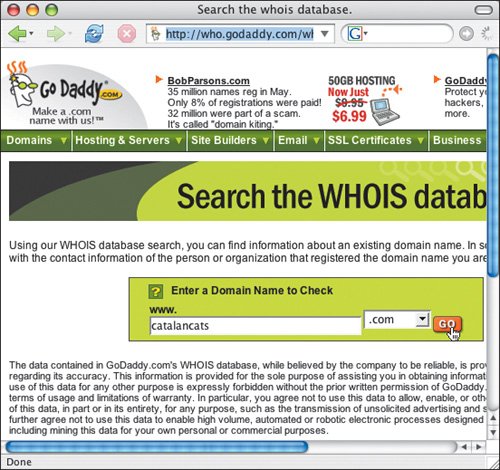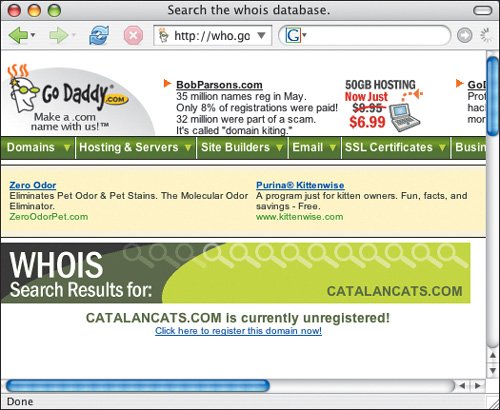 Best javascript editor debugger
Ajax website
Best javascript editor debugger
Ajax website
Getting Your Own Domain NameGenerally a Web page's address or URL is made up of the name of the server along with the path to the file on that server. When you use a Web host, they rent you a piece of their server and your Web pages take the name of that Web host, by default. For example, in my case, my Web host's server name is www.crocker.com and thus the URL for my pages might look something like www.crocker.com/~lizcastro/. However, if you don't want your Web host's server name to appear in your Web page's URL, you can register your own domain name (for around $10 a year) and then ask your Web host to create a virtual domain on their server with your domain name. In my case, while my pages are still on Crocker's server, they look like they're on my own server: www.cookwood.com. Even if your visitors don't know about servers and where the files actually reside, having your own domain name makes your URLs simpler and easier to type, and thus easier to visit. They also have one very important advantage. If you ever decide to change your Web host (or if they go out of business), you can move your domain to another server and all of your URLs will stay exactly the same. To get your own domain name:
Figure 23.1. Go Daddy is one of the accredited registrars of domain names. You can use their site to see if a desired domain name is available.
Figure 23.2. If the name is available, you can either register it through Go Daddy or call your Web host and get them to do it for you. (Now you know: the very useful www.catalancats.com domain can be yours!)
|
 Best javascript editor debugger
Ajax website
Best javascript editor debugger
Ajax website